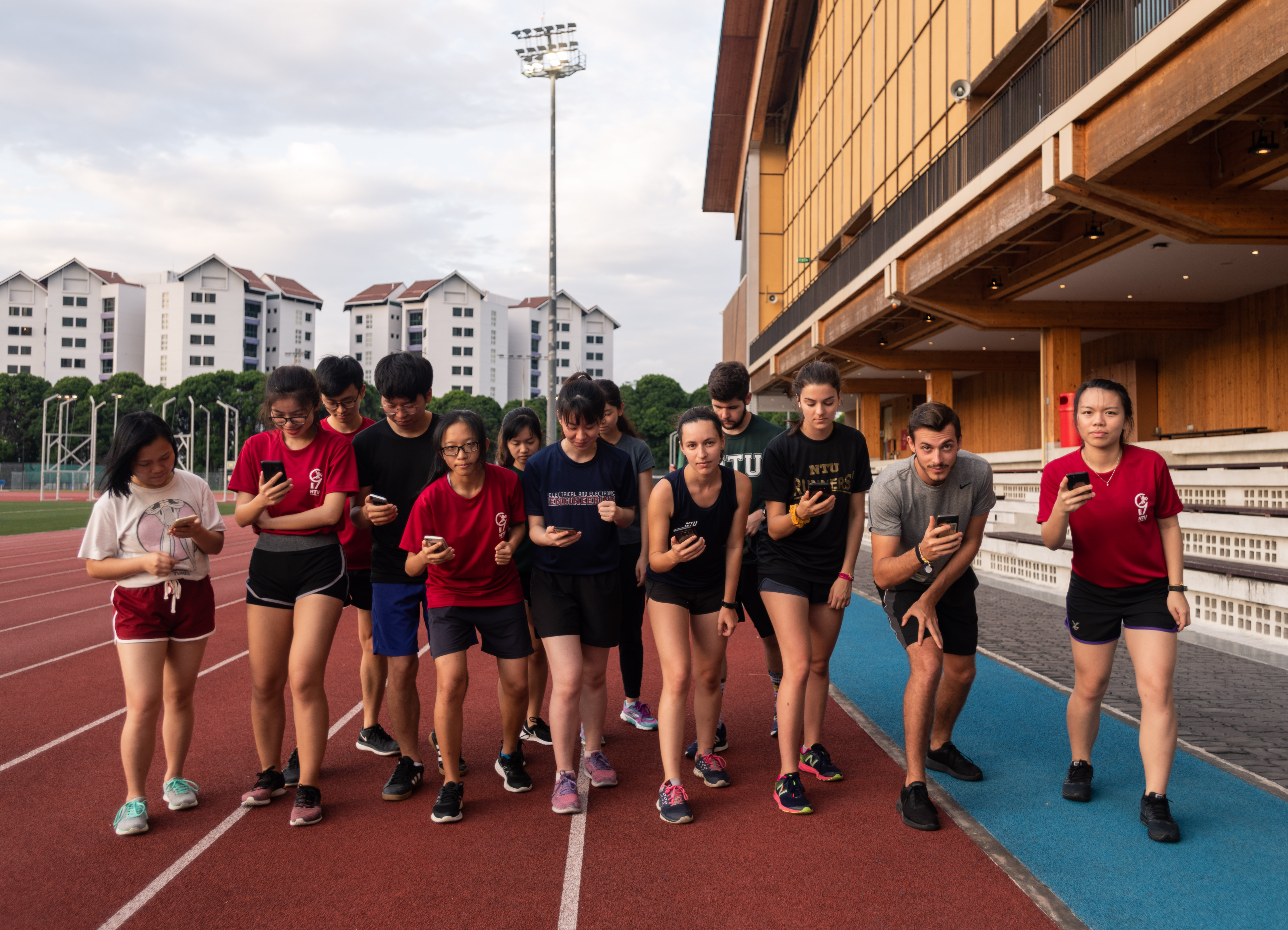Racing towards health
18 Mar 2019
By Yuki Ling
 The District Race mobile application uses augmented reality to create a more engaging running experience for participants. PHOTO: JOEL CHAN
The District Race mobile application uses augmented reality to create a more engaging running experience for participants. PHOTO: JOEL CHAN
He might have covered an additional kilometre during his weekly run with the NTU Runners’ Club on 20 Feb, but James Tan, 22, a second-year Electrical and Electronic Engineering (EEE) student was not as tired as he would usually be.
This was due to the club’s use of the “District Race” mobile phone application that allowed him to collect points while passing checkpoints along the running route.
“Counting the points I received at every checkpoint distracted me from how tiring the run was,” said Tan.
As part of a collaboration with the Health Promotion Board (HPB), the runners’ club saw the app as a fun and interactive element to add to their runs.
If the pilot test is successful, the app could potentially be added to the club’s annual event, X Campus, or even become a regular part of their runs, said the President of the NTU Runners’ Club, Lee Xiao Yu, a second-year EEE student.
“District Race”, however, is not a new app. It was created by District Technologies, a joint venture between Singapore-based Exceed Sports and Entertainment and Lightweave, an Australian-based experiential technology agency.
The app is used globally as a means to improve the experience of running using augmented reality and location-based triggers -- triggering actions on the app by detecting the runner’s location.
Participants compete for points by passing through checkpoints mapped out on the race route and completing challenges within a time limit, such as a quiz question and a time trial challenge where the runner has to complete a given task as quickly as possible. The app debuted in Singapore in March last year and has been adopted by prominent sports brands like Adidas Singapore.
The app was used for the first time by the NTU Runners’ Club this February – one of two trial runs to test student feedback on the app.
On 13 Mar, the club organised a race in which participants used the app to accumulate points. Participants paired up and had one hour to rack up as many points as possible, with the checkpoints mapped out on a part of the NTU campus.
The top three pairs that accumulated the most points on the race day received prizes including a wireless speaker and a fitness tracker. Finisher’s medals were given out to participants who completed both trial runs and the actual race.
This collaboration with HPB came after a previous collaboration, in which the NTU Runners’ Club helped to promote the step tracker for the National Steps Challenge.
The running club now has 400 members and some 80 students take part in the club’s weekly runs every Wednesday.
Club member Tan said he supports the use of the application every week as normal runs can get boring over time.
Another member of the club, Jeff Teo, a first-year School of Physical and Mathematical Sciences student, said that the competitive element of accumulating points motivated him to continue running.
“It’s not about racing to win a prize but just having another factor to keep me going,” added Teo, 24.
Some 40 students turned up for each of the trial runs, and more than 50 students participated in the actual race.
Room for improvement
But not all participants are in favour of using the app.
“Holding my phone spoils my momentum and rhythm of running,” said Matthew Robert Koh, a second-year student from the school of EEE, who joined the club for the first time this February.
The 23-year-old, who joined as he was curious about how the “District Race” app works, suggested the use of armbands to latch the mobile phones in place.
The app also required a constant connection to the Global Positioning System (GPS) and the internet.
A loss of either of these would mean that the application would not clock in the run and the distance clocked would be wasted, added Koh.
Another participant, Ng Wei Jian, a first-year Nanyang Business School student, drained over 10 per cent of his phone battery as the application had to be switched on for the entire run.
“If you leave the app running in the background, it will affect the data of the run such as the distance covered,” the 23-year-old added.
The club’s president, Lee, 22, said that there are no promises on long-term plans in using the app and the decision-making process depends on how well-received the race on 13 Mar was.
“We hope that using this app will help people kickstart a habit of running and slowly realise that exercising is not that hard,” said Lee.


